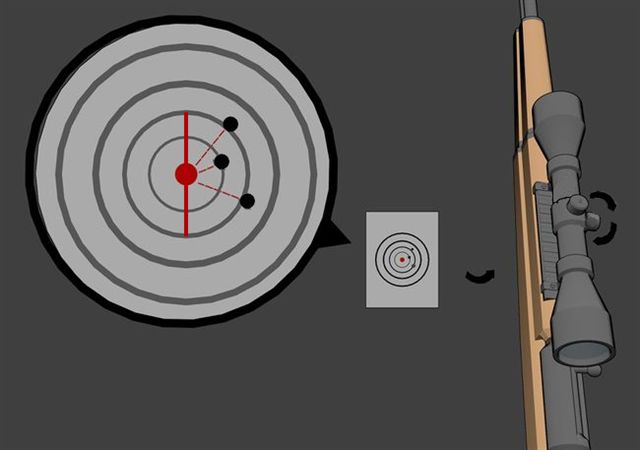To get the most out of a rifle scope, you must know how to properly adjust it. If you’re a novice to firing a scoped rifle, you might be asking how to zero the scope to your rifle, attach your scope to your rifle, and adjust your scope for different distances or wind conditions.
Even when you’ve used a scoped rifle before, there are some modifications you may not be aware of that will help you get the most out of your rifle scope. In reality, several of my sniper students had erroneously altered some of these settings. You’ll learn everything there is to know about each of the adjustments on your rifle sight and how to use them to become a better rifle shooter, no matter what level of rifle shooter you are.
Adjusting The Scope Up & Down
It can be difficult to get the scope at the precise right height for your eye. The idea is to put the scope at a level where you can rest your cheek in the shooting position you choose while the ocular lens is properly positioned in front of your eye.
You have a few options for increasing or decreasing the scope. Replacement mounting rings are available in two sizes: taller and shorter. Alternatively, if your scope is too high, you can purchase a cheek rest or duct-tape a towel to your rifle stock to raise your cheek. The most crucial thing is that you keep your eye where it should be at all times.
When your scope is at the correct height for you to see into it correctly, your eye is in the scope’s “eye box.” The more forgiving a scope’s eye box is, the more quickly and easily you can get your eye in it while shooting comfortably.
Unless you expressly purchase an off-axis scope mount, there is no way to shift the scope left and right. Your stance is most likely the issue if your scope is to one side of your eye while you are comfortable.
Adjusting Forward & Back
When there is adequate room on the main tube, the easiest way to adjust the scope forward and back is to loosen the rings and scoot the scope forward or back. When you’re doing this, make sure you don’t overtighten the rings on the ends of the scope where it starts to bulge outward, since this can easily shatter it.
If you’ve exhausted your capacity to push the scope and it’s still not moving far enough in the desired direction, the next best option is to loosen the rings that connect the scope to the rail and move them in the desired direction. If you need to move the scope farther back and the rings are already as far back as they can go, you may need to invest in a cantilever mount.
If you don’t understand what your scope’s eye relief is, you should be able to quickly search online for it and discover it on the product listing or on the manufacturer’s website, where it will normally be between 3 and 4.5 inches.
Make sure you don’t purchase a scout sight for a normal rifle or a standard scope for a scout rifle by mistake. Scout rifles have scopes that are positioned far further forward and have roughly 9 inches of eye relief, making them unsuitable on a standard rifle.
How To Use Zero-Reset?
Every new scope comes with a zero setting, which means all of the turrets and dials are set to zero with no windage or elevation changes. After mounting the scope to the rifle’s mount and sighting it in, you can alter the parameters.
You’ll have to reset the sight to factory zero if you wish to use it on another rifle later. With a basic screwdriver or Allen wrench, you can do it yourself.
You can reset your scope turrets in one of two methods. The first way involves placing the scope near a mirror and peering through the eyepiece. You will only see the reticle if the scope is optically centered. You’ll notice a shadow of the reticle in the mirror if it’s adjusted. Re-adjust the scope until the shadow is gone and the scope is aligned with it.
The second way is to entirely wind up the turret in one direction and then completely turn it in the opposite direction while counting the number of clicks. Simply split the total number of clicks in half and spin the turret back for half the clicks to bring it back to the center.
Mike Fellon is an experienced firearms enthusiast and optics expert. He delivers unbiased and detailed rifle scope reviews. Born and raised in Dallas, Texas. He inherited his hunting passions after his father John – he was fascinated by his stories, hearing how much attention, focus, dedication and patience he invested in shooting every animal. When he was old enough, his father first allowed him to shoot some cans and bottles with his shotgun, and then took him hunting – it was love at first sight. Mike has never stopped shooting ever since.

